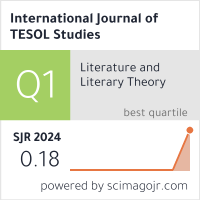2632-6779 (Print)
2633-6898 (Online)


Scopus
Ulrich’s Periodicals Directory (ProQuest)
MLA International Bibliography
MLA Directory of Periodicals
Directory of Open Access Journals (DOAJ)
QOAM (Quality Open Access Market)
British National Bibliography
WAC Clearinghouse Journal Listings
EBSCO Education
ICI Journals Master List
ERIH PLUS
CNKI Scholar
Gale-Cengage
WorldCat
Crossref
Baidu Scholar
British Library
J-Gate
ROAD
BASE
Publons
Google Scholar
Semantic Scholar
ORE Directory
TIRF
China National Center for Philosophy and Social Sciences Documentation
Frank Boers
Western University, Canada
Abstract
In this article I argue that the “Present-Practice-Produce” (PPP) approach to second language instruction is sometimes interpreted too rigidly and portrayed in a way that does insufficient justice to how the approach was originally described. I propose that each of the three Ps can be designed in diverse ways, with some more likely than others to bring about satisfactory learning outcomes. Misunderstandings about PPP could be avoided if we re-interpreted the sequence as “Awareness-Practice-Communication” (APC). I then demonstrate that, depending on how they are designed, PPP (or APC) lessons and task-supported language lessons can look very similar. Therefore, promoting a task-supported approach should not entail an outright dismissal of PPP.
Keywords
Awareness raising, transfer-appropriate practice, communicative tasks